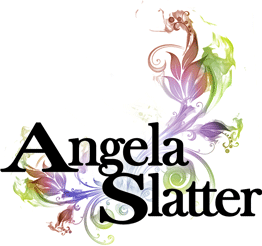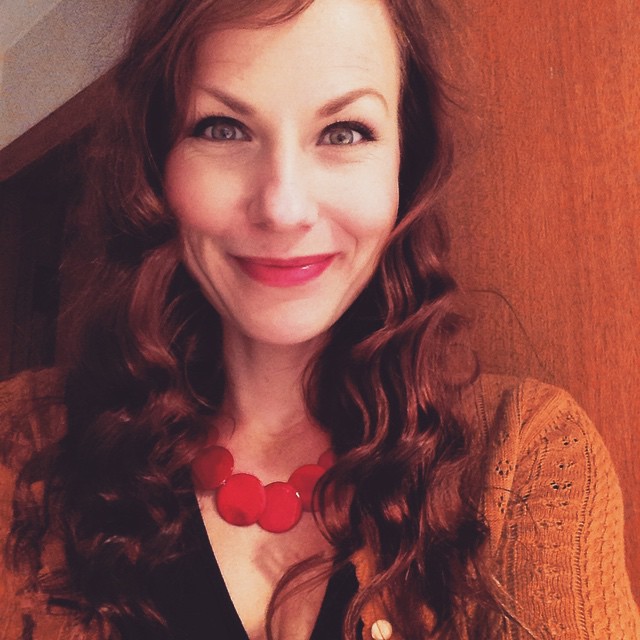 Lisa L. Hannett has had over 60 short stories appear in venues, including Clarkesworld, Fantasy, Weird Tales, Apex, the Year’s Best Australian Fantasy and Horror, and Imaginarium: Best Canadian Speculative Writing. She has won four Aurealis Awards, including Best Collection for her first book, Bluegrass Symphony, which was also nominated for a World Fantasy Award. Her first novel, Lament for the Afterlife, was published in 2015. You can find her online at http://lisahannett.com and on Twitter @LisaLHannett.
Lisa L. Hannett has had over 60 short stories appear in venues, including Clarkesworld, Fantasy, Weird Tales, Apex, the Year’s Best Australian Fantasy and Horror, and Imaginarium: Best Canadian Speculative Writing. She has won four Aurealis Awards, including Best Collection for her first book, Bluegrass Symphony, which was also nominated for a World Fantasy Award. Her first novel, Lament for the Afterlife, was published in 2015. You can find her online at http://lisahannett.com and on Twitter @LisaLHannett.
1. What do new readers need to know about Lisa L. Hannett?
Born and raised in Canada, I now live in Adelaide, South Australia — city of churches, bizarre murders and pie floaters. I write dark, weird, sometimes hard to categorise stories: fantasy, horror, magical realism all mashed together, and for reasons only my subconscious knows, lots of pieces about cowboys, Vikings, and seaside dwellers. I’ve had over 60 short stories published, some of which appeared in my first collection, Bluegrass Symphony, which was nominated for a World Fantasy Award and won the Aurealis Award for ‘Best Collection’; two other collections co-authored with a fabulous, award-winning author, Angela Slatter; and my debut novel, Lament for the Afterlife, won the Ditmar for ‘Best Novel’ this year.
Outside of writing (is there such a thing, really?) I’ve got a PhD in Old Norse-Icelandic literature, an Honours degree in medieval lit and fantasy fiction, and a Fine Arts degree in painting and photography. I’m alecturer in English and Creative Writing here in Adelaide, a gym junkie, and an Instagram devotee. I spend way too much time thinking about or taking pictures of food.
2. Did you always want to write and can you remember the first story you ever told?
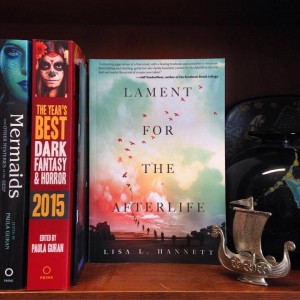
Photo by Lisa!
So, here’s the thing: I didn’t start writing until I was a few months shy of turning thirty. That doesn’t mean I didn’t always want to write, only I didn’t think I could. Sure, I scribbled crappy poetry in highschool (who doesn’t) and I have clear memories of being in Grade Five, reading a story I’d composedin front of the class — it was set in Russia, and my aunt had been teaching my sister and I Russian so, basically, I’d just wanted an excuse to show off the very few words I’d learned. But as I got older, I avoided any creative writing assignments at school because I was afraid I’d suck.
Plots? Characters? Sub-plots? My own worlds? Nope, nope, nope. Couldn’t do it, I thought.
However, I loved reading with a burning passion. I devoured novels, picture books, poems, comics — stories of all lengths, all genres. I didn’t really care what I was reading, so long as I was reading, but I was most obsessed with Fantasy and Science Fiction. Reading, I know without a doubt, is what taught me how to be a writer.
Meanwhile, I was channelling this obsession with fantasy into visual modes of storytelling — I drew constantly (fairies, elves, dragons, weird woodland creatures), which evolved into painting, which led me to a Fine Arts degree. Throughout all of my schooling — elementary, high school, university — I thought I was going to be an illustrator. I was going capture fantasy worlds and characters and tales in paint and pencil and mixed media. So the first story I told — in paint — took place in a secret grove in the deep-dark woods, and a magical deer was being chased out of the shadows into a shaft of golden light… Then came my elf version of ‘The Blue Boy’ (Thomas Gainsborough) and ‘Pinkie’ (Thomas Lawrence). And dragon mosaics. And paintings of drowning, Ophelia-like girls (for which my poor little sister modelled, submerged in the bathtub with her eyes open until she was bloodshot and pruned). I did a series of photos of a reluctant bride in a junkyard. Another series based on Spenser’s Faerie Queene.
Long story short(er), life happened, and in its circuitous way, led me to writing. I kept reading but painted less, took more photographs. I moved from Canada to Taiwan to Korea to Australia. I went back to university for literature-focused degrees. And then, only once I’d started my PhD in medieval Icelandic literature, I decided I’d give creative writing a shot. After spending a couple of years doing nothing but “serious”research, I found myself desperately missing speculative fiction — and thinking for the first time,Yeah, I’ve got some stuff to say now. So I sat at my computer, looked up venues to which I might submit a story (because, foolishly, I thought writing short stories would be easier than writing novels), and told myself I’d give it a shot — in secret — so that if I failed, nobody would know but me.
The first story I told (and sold) was ‘The Evangelist’s Tale’ for Dirk Flinthart’s Canterbury 2100 anthology, and it got into print because Dirk was extremely generous with his time. He helped me narrow an 18,000 word draft into a 6,000 word piece — and in the process taught me what it meant to write short stories.
3. What was the inspiration for your debut novel Lament for the Afterlife?
Like the wordwinds whirling throughout Lament, the inspiration for this novel is a bit of a jumble. On the one hand, obviously, it’s about war: I’m fascinated and perplexed and horrified by the Vietnam War, the Gulf War, the Israeli-Palestinian conflict, the ongoing devastation in the Middle East, and elements of World War I — all of which seem so hopeless and so dire and so confusing — so I wanted to explore those feelings of helplessness in a medium over which I have some control. On the other hand, it’s about the beauty and ugliness and power of language. Also, it’s about the desire I had as a kid to see the magical world — to really see fairies and elves — while also realising I’d never, ever get to (which is so unfair!). But mostly, it’s about regular people being born into extraordinary and awful situations, and their having to cope with extremes that are pretty much out of their control. This is something I’m perpetually interested in and inspired by — I often wish I could write adventure stories with feats of derring-do and fast-talking swashbucklers, but I always seem to come back to underdogs just trying to get their heads above the pack.
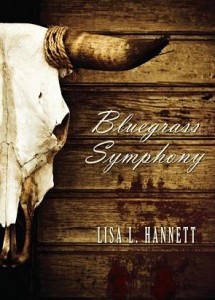 4. What kinds of research did you do for a book which has the nature and consequences of war at its heart?
4. What kinds of research did you do for a book which has the nature and consequences of war at its heart?
Since the world and the war at the heart of Lament for the Afterlife are really reactions to many of the wars in our world, I started off by reading up on the conflicts I’ve just mentioned. Historical accounts, soldiers’ diaries, textbooks, good old Wikipedia — I soaked up whatever I could. I went to the Canadian War Museum in Ottawa, which filled many pages in my notebook. I read lots of novels set in WWI, Vietnam War, Korean War, as well as poems written by soldiers. I watched hours and hours of YouTube videos — the ones about WWI veterans with shellshock will haunt me for the rest of my life — and also watched more war movies than is probably healthy. The whole time, I wasn’t really trying to capture facts from real life about “big picture” things (as in: what started the Vietnam War? Why did it go on for so many years? Which countries were allied in WWI?) but on the individual human element. What the boys’ faces looked like in those faded photographs. What details they hid from their parents when writing letters home. What sorts of frivolous things they’d carry in their packs. What tricks of the mind, what games, what songs and stories they’d use to distract themselves from the horrors they faced, the horrors they caused.
5. Of all of your short stories, which is your favourite baby?
This is always a hard question! Not because I don’t have favourites — I always have favourites — but because I tend to favour the newest, shiniest baby. BUT, if the story retains a bit of glimmer once it’s aged, then I figure it must really be a favourite… So, in that respect, I still love ‘Down the Hollow’ from Bluegrass Symphony. Having said that, I also love ‘A Shot of Salt Water’, which was published in The Dark last year — I so want to live in that world. Or at least visit it frequently. Which is also probably why my newest, shiniest baby is my current favourite: ‘A Right Pretty Mate’, which is coming out this year in Jack Dann’s Dreaming in the Dark anthology, is also set in that strange seaside world, and when I read over the proofs the other day, I felt this yearning that was pretty much like love.
6. Who were/are your literary heroes/influences? 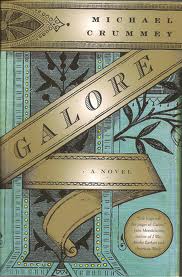
Let’s go with heroes because, realistically, probably every story I’ve ever read has influenced me in some way. Even the bad ones. So, heroes: Michael Crummey (guys: read Galore. Seriously!), Margaret Atwood (almost everything, especially up to Oryx and Crake), Margaret Laurence (The Diviners and The Stone Angel especially), Timothy Findley (especially The Last of the Crazy People), Patrick DeWitt (because The Sisters Brothers is so good I can’t even), Shirley Jackson, E. Annie Proulx, David Malouf.
7. Your debut collection Bluegrass Symphony created an astonishing rural/backwoods kind of world – where did you take your inspiration from?
My first instinct when asked this question is always to say, “I’ve got no idea.” How on earth did a Canadian girl, living in Australia, with a deep interest in medieval Scandinavia, come to write about a pseudo-American South, full of cowboys and farmers and poor country folk?
To be honest, I think it’s a patchwork of interests and memories that inspire the world in Bluegrass. I see many similarities between the honour-based societies of early medieval England and Scandinavia and that of small, rural towns where folk have to look out for one another, where everyone knows and is involved in everyone else’s business, where people are beholden to one another in a way that is less obvious or important in big cities, for example — and I still haven’t gotten sick of exploring these similarities. I’m also obsessed with isolation, harsh but often beautiful environments, and what people who rely on the land have to do to survive in dire circumstances (again, I think this is an interest from the Old Norse period that has spilled into the way I see downtrodden farmers suffering due to drought in Bluegrass’s world).
But I think the seed that sprouted all of this, really, is country music. I didn’t realise how pervasive country music is in Canada until I’d been away for several years; going back home to visit, I was suddenly aware of all the country songs piped into grocery stores, used in commercials, played in malls, and regularly spun on the radio. My parents had a massive collection of country records when I was growing up, and memories of those fiddles and guitars have definitely fed into Bluegrass. I listened to country albums non-stop while writing Bluegrass Symphony (not during the actual writing of the stories, except once, when I wrote ‘Down the Hollow’; but in the car, on the bus, while making dinner, and so on, I surrounded myself with twang) and I learned a lot about the ethos behind these tunes, which inspired me to write even more stories. Also, and finally, I think the landscape inspires me: the wheat and cornfields, the barns, the woods, the lonesome houses. Even though there’s a definite American flavour to these stories, the settings (more often than not) come from my memories of growing up in Ontario and Alberta. Bluegrass is in many ways an homage to Canada — at least, to my imagined version of it. It’s a few hundred pages of homesickness.
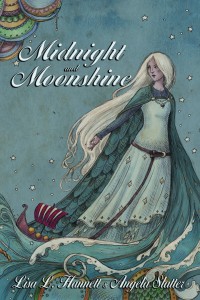 8. Name your five eight favourite novels.
8. Name your five eight favourite novels.
Galore by Michael Crummey
The Handmaid’s Tale by Margaret Atwood
Mrs Dalloway by Virginia Woolf (even better if read alongside The Hours by Michael Cunningham)
Jonathan Strange & Mr Norrell by Susanna Clarke
We Have Always Lived in the Castle by Shirley Jackson
The Sisters Brothers by Patrick DeWitt
Lord of the Rings by J.R.R. Tolkien (lifelong favourite!)
9. You get to invite five fictional characters for drinks and general shenanigans: who’s on the guest list?
The Gentleman with the Thistledown Hair from Jonathan Strange & Mr Norrell because he is a tricksome, self-important, whimsical, well-dressed Faery king who will keep us entertained with his shenanigans; he can whisk the party away to other realms if he gets bored, or keep the sun from rising if we’re all having such a good time that we don’t want the night to end. Also, he’s a great dancer. Galadriel from Lord of the Rings because I LOVE HER. Plus, she’d be a good mediator if things with The Gentlemen got out of hand. The Fool from Robin Hobb’s Farseer books because s/he is mischievous and smart and sweet, and will have a trove of good stories to share with us all, even if s/he often speaks them in riddles. Tyrion Lannister because the man can talk! And drink. And will most likely be the sanest one there. Finally, since I’ve got so many fey folk at this shindig, we need a suitable venue… So instead of a fifth character, I want to nominate Tamson House as the location for the party: it’s a sprawling house in downtown Ottawa (according to several of Charles de Lint’s novels, that is), where worlds and spirit realms converge, where cool artsy people hang out, and where Magic Things Happen.
10. What’s next for Lisa L. Hannett? 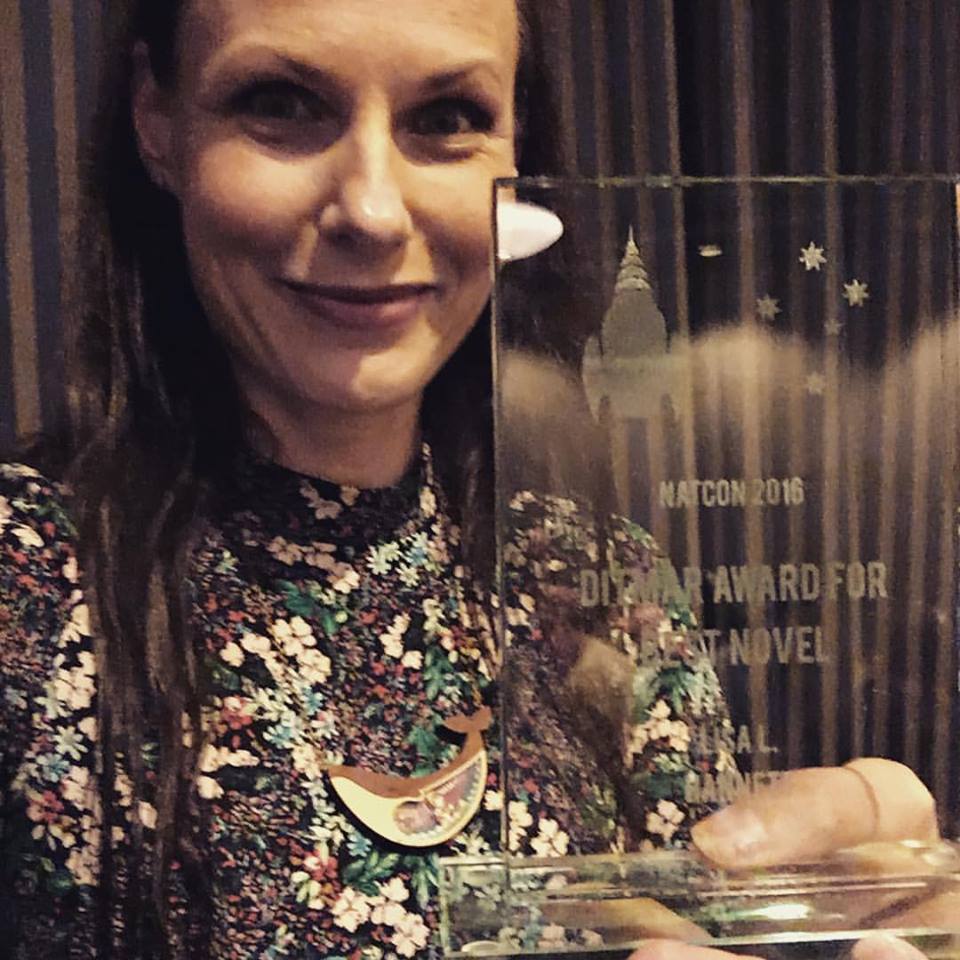
As we speak, I’m finishing up my next collection: The Homesteaders is another book of short stories set in the world of Bluegrass Symphony. Backwoods witches, immortal soothsayers, bear-shaped child-stealers, raven-shaped miners, and lots of ghosts make up some of the characters in these tales, all tinged with a down-home country twang. I’m also in the process of editing / doing rewrites on my next novel, Ketill’s Daughter, which is the first in a two-book series, The Invisible Woman. Set in Viking Age Norway, this book tells the early story of Unn the Deep-Minded — wife of one king, mother to a second, and eventually a famous Viking herself — as she struggles to find her own fame and fate in this warrior world, all while her shape-shifting time-travelling fylgja (a kind of spirit guide) keeps butting in to mess things up for her… The second book in the series (called Deep-Minded) will follow Unn out of Norway into medieval Ireland, Scotland, and finally Iceland. She was quite the world-traveller! While working on these novels, I’ll also be fleshing out another short story collection: this one is a cycle of tales set in the same seaside world as ‘A Shot of Salt Water’ and ‘A Right Pretty Mate’. Along with a few commissioned short stories, I’ll be juggling these projects with lecturing full-time, so they’ll keep me busy for a while!
